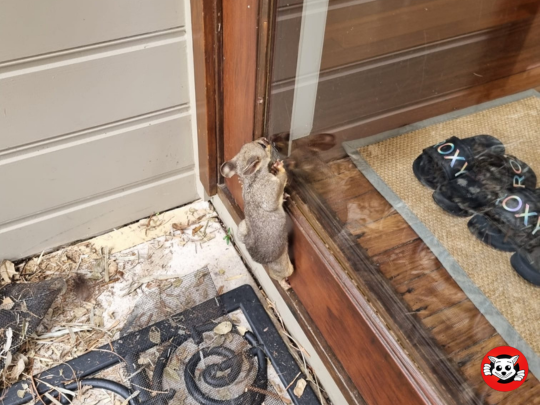Your home is your sanctuary. However, during certain times of the year, it might also look like a sanctuary for local wildlife. Native animals such as possums, rodents, and birds often seek shelter in human homes, especially during colder months or when their natural habitats are disrupted. While their presence might seem harmless initially, it can lead to significant damage and disturbances. One of the most effective ways to protect your property is by sealing entry points and implementing humane preventative measures.
This blog will explain why entry point sealing is critical for wildlife-proofing your home, the risks of exposing these vulnerabilities, and how to take actionable steps to create a safe space for you and the wildlife around you.
Why Wildlife Seeks Shelter in Your Home
Wildlife instinctively searches for warmth, protection, and food. Possums, for instance, are expert climbers and are often drawn to roofs. Similarly, rodents and birds may find comfort nesting near heating systems or inside vents, especially during colder months. When natural habitats are reduced due to urban expansion, animals rely more on human-made structures to survive.
While it’s easy to empathise with their plight, uninvited wildlife guests can cause disruptions. Understanding why animals enter your home helps you take steps to address the issue both ethically and effectively.
The Risks of Unsealed Entry Points
Leaving entry points unsealed sets the stage for various complications, which are costly and inconvenient. Wildlife intrusions can result in physical damage, such as chewing through wiring, destroying insulation, or compromising your home’s structural elements. These issues not only require expensive repairs but can also pose serious safety risks, like electrical fires.
Additionally, the presence of wildlife can lead to health concerns. Animal droppings, urine, and nesting materials often harbour bacteria and parasites. In addition, the noise disturbances from nocturnal creatures like possums disrupt sleep and peace of mind. By sealing entry points, you mitigate these risks early on.
Common Vulnerable Areas in Australian Homes
Wildlife typically exploits weak points in a home’s structure to gain access. Common entry points include roof gaps, broken tiles, damaged or uncovered vents, and unsealed chimneys. Other vulnerable areas include poorly secured doors, windows, and spaces around plumbing or utility lines.
Your garden can also inadvertently invite wildlife. Overhanging tree branches act as highways for possums to access your roof, while cluttered areas or unsealed garbage bins can attract smaller animals like rodents. Identifying these vulnerable spots is the first step in wildlife-proofing your property.
Simple Steps to Seal Entry Points
Sealing entry points doesn’t have to be overwhelming. Start by conducting a thorough inspection of your property. Look for small openings, cracks, or gaps in walls, roofs, and foundations. Here are some simple measures you can take:
- Secure the Roof: Fix broken tiles and flashing and seal gaps using wildlife-safe materials like heavy-duty wire mesh.
- Cover Vents and Chimneys: Install mesh coverings or specialised grates to block animal access without compromising ventilation.
- Trim Overhanging Branches: Keep tree branches safe from your roofline to reduce access points.
- Seal Doors and Windows: Use weatherstripping and door sweeps to close gaps around frames.
- Inspect Utility Areas: Check spaces around plumbing or electrical lines and fill gaps with durable sealants.
By addressing these areas proactively, you can save time, money, and hassle while ensuring the comfort of your home.
Humane Alternatives to Wildlife Intrusions
Sealing entry points prevents wildlife from invading your home, but it’s equally important to do so humanely. Wildlife plays a vital ecological role, and harming native species is unethical and illegal in many cases. For example, relocating possums without a permit is against Australian law, and improper methods can cause them significant harm.
To manage wildlife intrusions ethically, consider providing alternative habitats. Installing possum boxes in your yard offers animals a safe space to nest away from your home. Gentle deterrents, such as motion-sensor lights or natural repellents like eucalyptus oil, can also discourage animals from approaching.
Humane solutions ensure that native wildlife can coexist with urban environments while safeguarding your property.
Why Professional Assistance Matters
While you can take many preventative steps yourself, working with professionals guarantees comprehensive, long-term solutions. Experts like Possum Busters have the tools, training, and licensing required to handle wildlife issues efficiently.
Professionals can conduct detailed inspections of your home to identify all potential entry points. They use specialised techniques to seal these gaps, ensuring animals are removed safely, and no creatures are trapped inadvertently. Additional measures, such as tailored deterrents and maintenance plans, can offer ongoing peace of mind.
If you’re dealing with wildlife intrusions or need advice on wildlife-proofing your home, partnering with experts like Possum Busters ensures the job is done right, ethically, and legally.
Protecting your home from unwanted wildlife doesn’t have to be stressful. By identifying and sealing entry points early on, you can avoid costly repairs and disruptions while compassionately supporting local wildlife.
Contact Possum Busters today at 1300 663 372 for expert assistance and to learn more about our humane and professional services. Together, we can create a safe space for homeowners and Australia’s unique wildlife.


